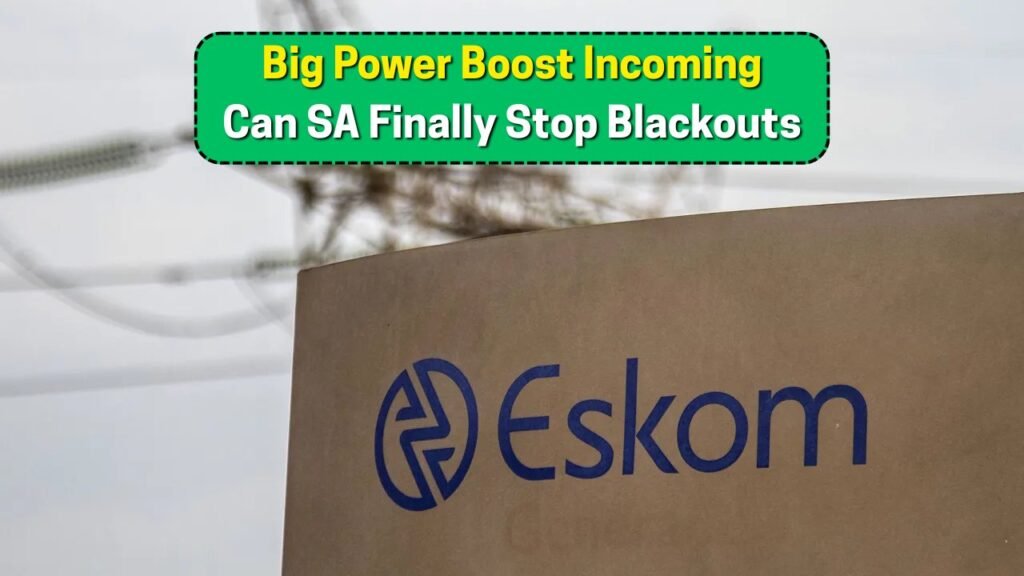South Africa’s R2 Billion Energy Rescue: As South Africa grapples with persistent energy challenges, the government’s recent R2 billion allocation towards energy improvements has sparked significant interest. The initiative aims to address the chronic issue of load shedding that has plagued businesses and households alike. With power cuts disrupting daily life and economic activities, this financial commitment brings a ray of hope. The funding is directed towards improving infrastructure, increasing capacity, and exploring alternative energy sources. Amidst all the anticipation, many are left wondering if this could finally signal the end of load shedding. Experts are cautiously optimistic, noting that while immediate changes may not be apparent, strategic implementation could pave the way for long-term stability in the country’s energy supply.

Government’s R2 Billion Energy Plan: A Strategic Approach
The South African government’s plan involves a comprehensive strategy to revitalize the nation’s energy sector. This R2 billion injection is not merely a band-aid solution but part of a larger effort to create a sustainable and reliable energy system. The funds are earmarked for upgrading existing power plants, enhancing grid infrastructure, and promoting renewable energy projects. By focusing on renewable sources, such as solar and wind energy, the government aims to reduce dependence on coal, which has been a major contributor to frequent outages. The initiative also includes training programs to upskill the workforce, ensuring that there is adequate expertise to manage and maintain the new systems. This strategic approach not only addresses the immediate energy crisis but sets a foundation for future growth and innovation in the energy sector. The success of this plan relies heavily on effective implementation and monitoring to ensure that the objectives are met within the stipulated timelines.
Could Load Shedding Become a Thing of the Past?
Load shedding has become an all-too-familiar term in South African households, often disrupting daily routines and impacting economic productivity. The introduction of the R2 billion energy rescue plan raises hopes that load shedding could soon be a thing of the past. While the plan promises significant improvements, experts caution that it will take time before the full effects are felt. The transition to a stable energy supply involves overcoming various challenges, including bureaucratic hurdles and the integration of new technologies. However, with a clear roadmap and commitment from the government, the prospects for reducing load shedding are promising. The focus on renewable energy is particularly encouraging, as it aligns with global trends towards sustainable energy solutions. By diversifying energy sources and improving infrastructure, South Africa is positioning itself to not only end load shedding but also become a regional leader in energy innovation.
Impact on Businesses and the Economy
The persistent energy shortages have had a profound impact on businesses across South Africa, with frequent power cuts affecting productivity and profitability. The R2 billion energy rescue plan is poised to provide much-needed relief to the business community. With a more reliable power supply, businesses can operate more efficiently, reducing downtime and operational costs. This, in turn, could lead to increased investments and job creation, bolstering the economy. Moreover, the focus on renewable energy presents opportunities for new industries to emerge, further diversifying the economic landscape. However, the transition is not without its challenges. Businesses will need to adapt to new technologies and possibly invest in upgrading their own infrastructure to align with the national grid improvements. The government’s commitment to resolving the energy crisis is a positive step, but collaboration with the private sector will be crucial to ensure that the benefits of the energy rescue plan are fully realized.
Looking to the Future: A Sustainable Energy Landscape
As South Africa embarks on this ambitious energy overhaul, the vision is not just to resolve the current issues but to create a sustainable energy landscape for future generations. The R2 billion investment is a significant step towards achieving energy security and sustainability. By embracing renewable energy, South Africa is contributing to global efforts to combat climate change while simultaneously addressing domestic energy needs. The transition to a greener energy mix will require continued investment and innovation, but the potential rewards are substantial. Clean energy not only reduces environmental impact but also offers economic benefits through the creation of green jobs and the potential for energy exports. As the nation moves forward, it will be essential to maintain momentum and ensure that all stakeholders, from government to citizens, are engaged in the process. The path to a sustainable energy future is challenging, but with determination and strategic planning, South Africa can lead the way in energy transformation.



